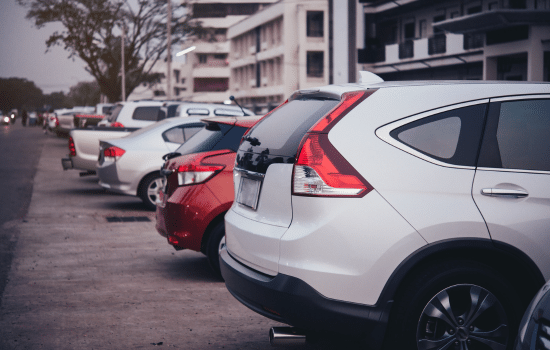Advertisements
Fuel consumption is one of the most important factors when choosing a car. Many buyers, attracted by the design, power or prestige of certain brands, overlook the fact that high consumption can significantly impact their budget.
In addition, a car that “drinks” too much gasoline increases its carbon footprint, something that is increasingly worrying for those who want to protect the environment.
Advertisements
In this article, we will explore ten popular models of today that are notorious for their high fuel consumption. This is not to disqualify them, but to provide information that helps drivers make a decision with full knowledge of the pros and cons.
Each of these cars has qualities that make them attractive for certain user profiles, but their fuel consumption is a fact that should not be overlooked.
Advertisements
We will also briefly discuss why these vehicles consume so much fuel and how to reduce their impact, as well as the importance of proper maintenance and driving style to improve efficiency.
In addition, we will introduce the name of a car comparison app that can make it easier to search and compare objective data before making a purchase.
See also:
- The 10 fuel guzzlers
- 5G: Digital speed revolution
- Free Wi-Fi: Internet without borders
- Top 10 Most Fuel-Efficient Popular Cars
- Free applications to learn easy drums
Why is it important to consider fuel consumption?
Gasoline spending has a direct impact on the economy of any family or individual who uses a car frequently. The more you drive, the greater your monthly or weekly investment in fuel will be.
For those who travel long distances on a daily basis or have intensive use of the vehicle, a model with high consumption can become a significant financial burden.
On the other hand, environmental awareness is a key element when choosing a car. The higher the consumption, the more CO₂ emissions are generated, contributing to global warming and pollution.
Although these cars are much admired for their power or their towing capacity, it is essential to evaluate whether these benefits really compensate for the economic and ecological cost they entail.
In addition, knowing the efficiency of a car allows for more objective comparisons with other models with similar characteristics that may offer more user-friendly consumption figures.
Armed with this information, buyers can balance their priorities and choose the option that best fits their lifestyle and budget.
Reasons why some cars consume more
There are several factors that explain why one car may consume more fuel than another:
- Engine capacity and power: The larger and more powerful the engine, the greater the demand for gasoline to reach and maintain certain speeds.
- Weight and size: A heavy vehicle requires more energy to move, which translates into higher consumption.
- Poor aerodynamics: Designs that do not optimize airflow around the body increase drag and the need for extra power.
- Inefficient transmissions: Some older or poorly calibrated automatic transmissions can cause the engine to run at higher revs than necessary.
- Intensive use in the city: Many models are optimized for highway driving, but in urban areas with constant braking and acceleration, consumption skyrockets.
With these points in mind, we can better understand why some popular cars can be less efficient compared to others. This does not make them bad vehicles, but it does make them models that deserve careful analysis.
Top 10 cars with the highest consumption today
Below we present ten cars that are recognized in the market for different virtues — whether their power, space, style or towing capacity — but that stand out for having higher than average fuel consumption.
Consumption figures may vary depending on region, fuel type and driving style, but generally reflect a consistent trend.
1. Jeep Wrangler
An iconic off-road vehicle that shines on off-road adventures. However, its boxy body and heavy weight make it less efficient in the city and on the highway, requiring frequent refueling.
2. Ford Explorer
Known for its spaciousness and family-friendly comfort, it offers powerful engines that translate into remarkable fuel economy. Especially in urban areas, the Explorer can surprise with higher-than-desired fuel consumption figures.
3. Dodge Durango
Ideal for those looking for a robust and impressive SUV, but its generous displacement and focus on performance lead to above-average fuel economy averages.
4. Toyota 4Runner
The 4Runner shines in off-road adventures and durability, but it's well-known that its fuel efficiency isn't its strong suit, partly because of its larger engine.
5. Nissan Armada
Widely valued for its power and interior space, the price to pay is at the gas station, where the Armada demonstrates that moving so much metal mass requires a large amount of gasoline.
6. Ford Expedition
Another large SUV that many love for its comfort and capability. However, these benefits are offset by frequent visits to the gas station and a high daily cost.
7. Honda Pilot
Reliable, spacious and family-friendly, the Pilot suffers from poor performance in urban environments and short journeys, driving up the gas bill.
8. GMC Yukon
Spacious, luxurious and with a robust engine, the GMC Yukon guarantees power and comfort to its passengers, at the cost of considerable fuel consumption.
9. Chevrolet Suburban
Known for its massive size and multiple uses, the Suburban offers plenty of room for passengers and luggage, but the impact on fuel economy is undeniable.
10. Dodge Journey
Designed for families, the Journey offers comfort and spaciousness inside. However, its mechanics are not optimized for efficiency, generating higher consumption than expected.
Is it reasonable to buy one of these models?
Many users who opt for these cars are not motivated by fuel economy, but by other advantages: off-road performance, load capacity, luxury or robustness. For some families or professionals, these qualities justify the additional expense.
However, it is advisable to evaluate the actual use that will be given to the vehicle. If it will be mainly for urban journeys or short distances, it may be excessively expensive to maintain a high-consumption car.
On the other hand, if its power and capability are needed for specific activities, it might be worth the higher gas bill.
The importance of maintenance and driving style
Even in models with high consumption, it is possible to optimize expenditure with certain practices:
- Maintain proper tire pressure.
- Perform check-ups and oil changes on time.
- Get rid of unnecessary weight, freeing up space and reducing the overall load.
- Drive smoothly, avoiding sudden acceleration and excessive braking.
- Planning routes to avoid traffic jams and overly long journeys.
These measures help to partially mitigate the impact of a car that consumes more gasoline than normal.
Buying with knowledge: the role of comparisons
For those considering the purchase of a car and wishing to compare consumption data objectively, there are very useful digital tools.
Especially if you're looking to filter models by fuel consumption, size or price range. And this is where specialized technology comes into play.
The recommended app to compare
A reliable tool for comparing features and expenses of various vehicles is the application ComparAuto, which allows:
- Filter by engine type, price and estimated consumption.
- Check out reviews from other users who share real-life usage experiences.
- Obtain efficiency statistics in both urban and highway environments.
- Compare similar models to find out which one best suits your lifestyle.
ComparAuto It is a very useful reference for those who want to go beyond the technical sheets and get closer to the day-to-day reality of each car.

Concussion
The ten cars listed stand out in certain aspects such as space, comfort or power, but consumption data may be decisive for many buyers.
Even with their strengths, choosing one of these models means assuming a constant cost at the gas pump and a greater environmental impact.
So the key is to balance priorities: If the need for power, off-road capability or family space outweighs concerns about fuel economy, any of these cars can fit the bill.
However, if economy and energy efficiency are priorities, it is worth looking at hybrid versions or other lighter and more optimized vehicles.
In any case, having applications like ComparAuto It allows you to compare data in a simple way, avoiding decisions that you later regret due to excessive expenses.
Being informed will always be the best strategy to find the balance between the car of your dreams and the reality of day-to-day maintenance.
Driving a fuel-efficient model may be the right choice for some, but those looking to cut costs and emissions also have alternatives on the market.
The decision, as always, depends on individual needs and a responsible analysis of each factor that influences the vehicle's useful life and its owner's pocketbook.




